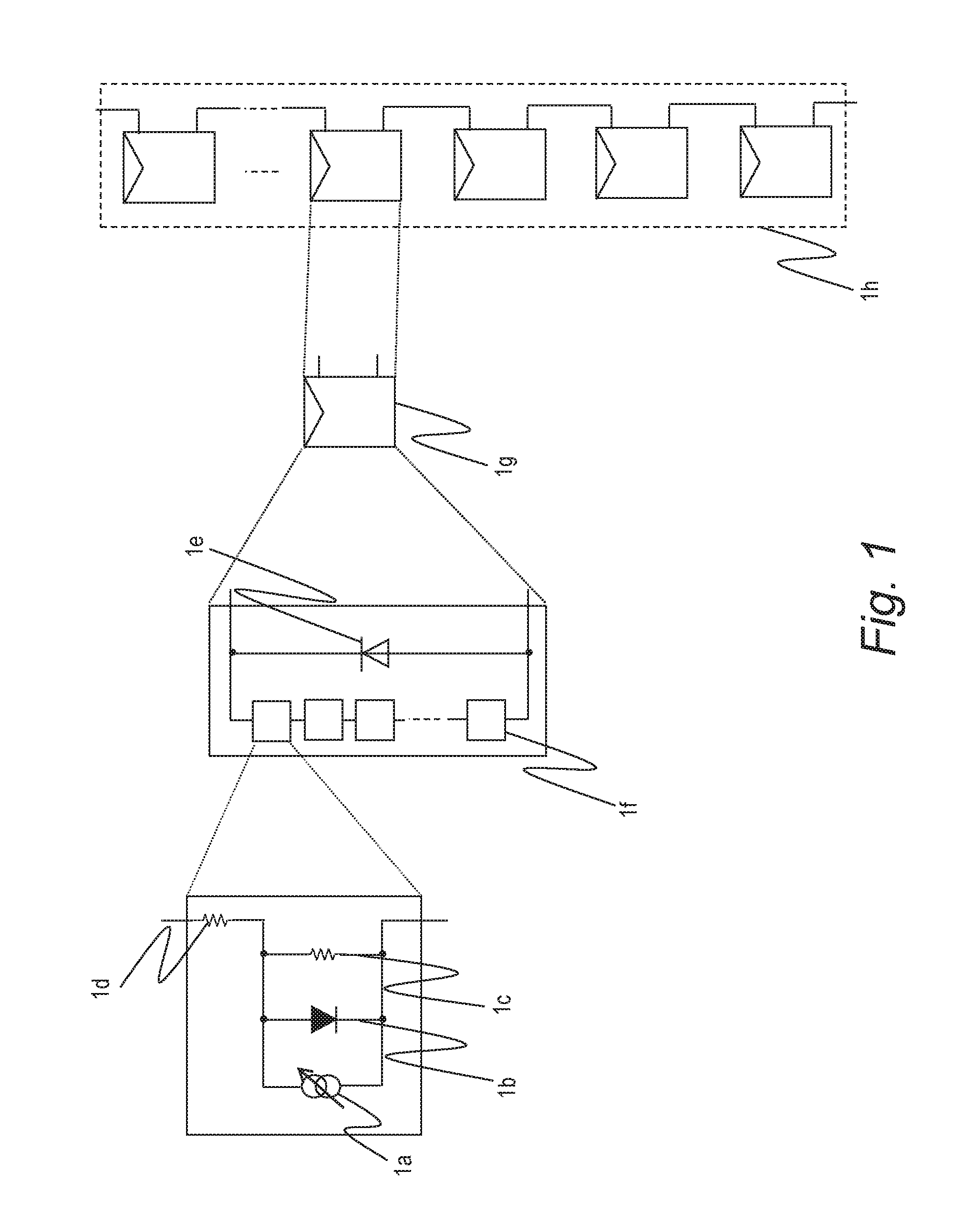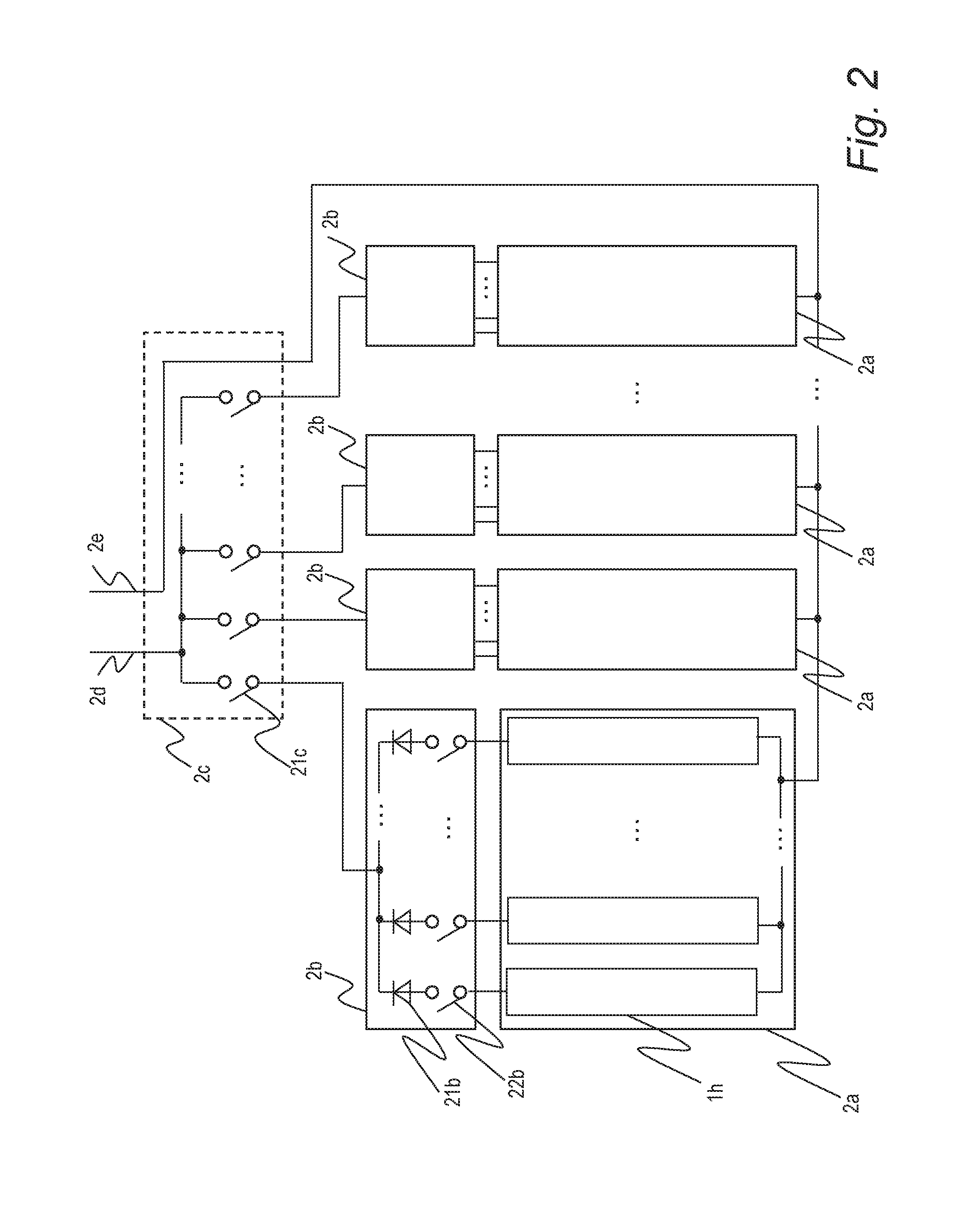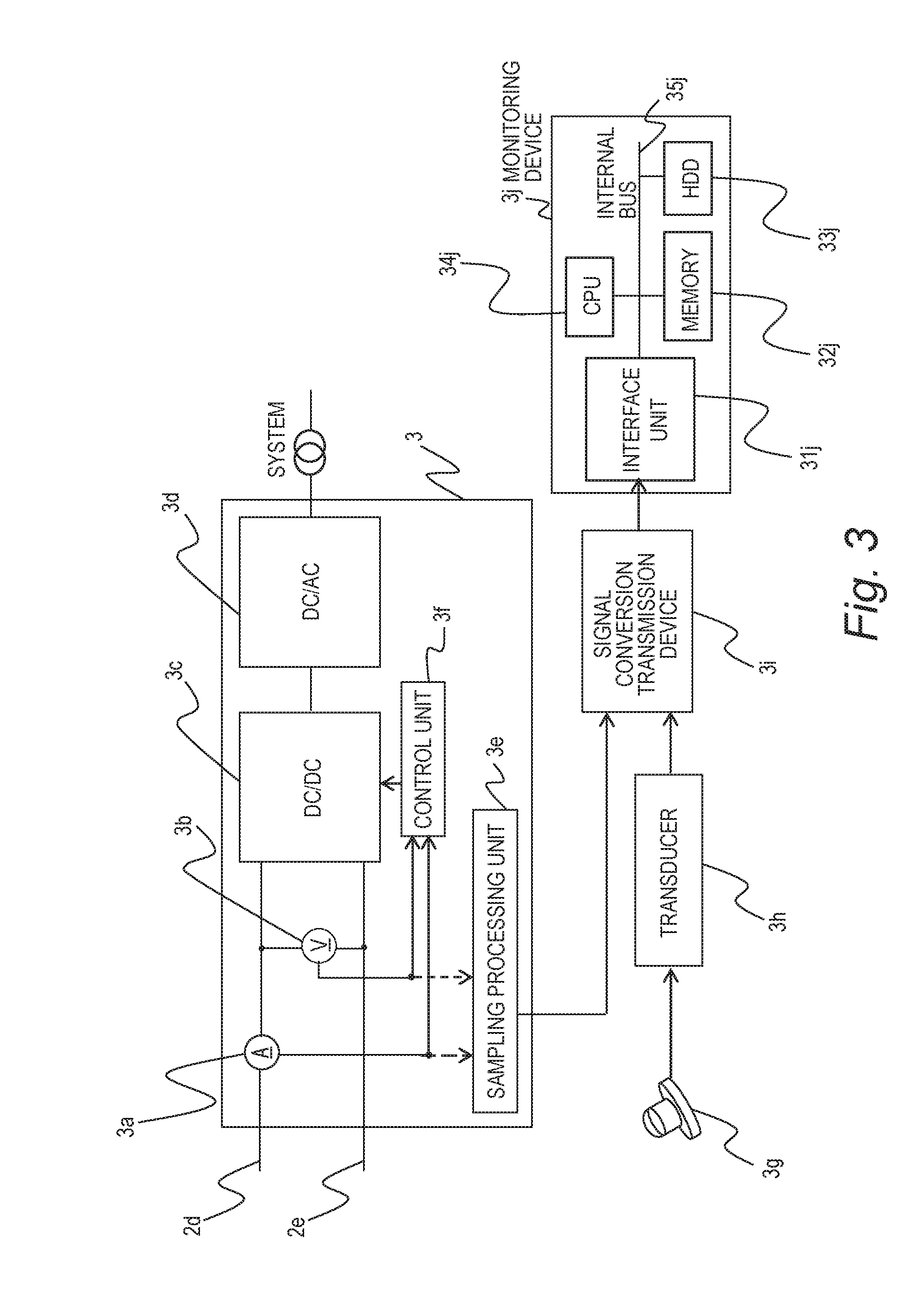Diagnostic Method for Solar Power System and Monitoring Device
- Summary
- Abstract
- Description
- Claims
- Application Information
AI Technical Summary
Benefits of technology
Problems solved by technology
Method used
Image
Examples
embodiment 1
[0025]Embodiment 1 pertains to a diagnostic method for a photovoltaic (PV) power system in which the intensity of solar radiation (insolation) on a PV cell array is determined according to operating current and voltage of a PV cell array during two selected time periods while changing the series resistance, which is a cause parameter for overall degradation, an operating temperature and fault value of the PV cell array are calculated using the operating voltage and solar radiation intensity, and computation is repeated until the fault values calculated for the respective time periods match, thereby distinguishing loss as a result of a faulty module present in the PV cell array from loss as a result of overall degradation.
[0026]Before explaining the embodiments, properties of a PV power system and PV cells in a large-scale PV power plant to which the embodiments are applied will be described.
[0027]FIG. 1 is a descriptive view of an example of a configuration of a PV cell string accor...
embodiment 2
[0087]Next, Embodiment 2 of a diagnostic method for a PV power system will be described. Aside from the differences described below, the various components of the system of Embodiment 2 have the same functions as the components of Embodiment 1 that are displayed in FIGS. 1 to 8B and that are assigned the same reference characters, and thus, descriptions thereof are omitted.
[0088]During the two selected time periods, the monitoring device 3j of Embodiment 2 does not estimate initial characteristics of the PV cell array, but first performs the two processes of calculating the solar radiation amount incident on the PV cell array and calculating the estimated temperature of the PV cell array, determines the fault value including overall degradation (loss resulting from series resistance), and calculates the series resistance according to the difference between the fault value 1 and fault value 2. Details of these processes will be explained below.
[0089]As shown in FIGS. 5A and 5B, if lo...
PUM
 Login to View More
Login to View More Abstract
Description
Claims
Application Information
 Login to View More
Login to View More - R&D Engineer
- R&D Manager
- IP Professional
- Industry Leading Data Capabilities
- Powerful AI technology
- Patent DNA Extraction
Browse by: Latest US Patents, China's latest patents, Technical Efficacy Thesaurus, Application Domain, Technology Topic, Popular Technical Reports.
© 2024 PatSnap. All rights reserved.Legal|Privacy policy|Modern Slavery Act Transparency Statement|Sitemap|About US| Contact US: help@patsnap.com










